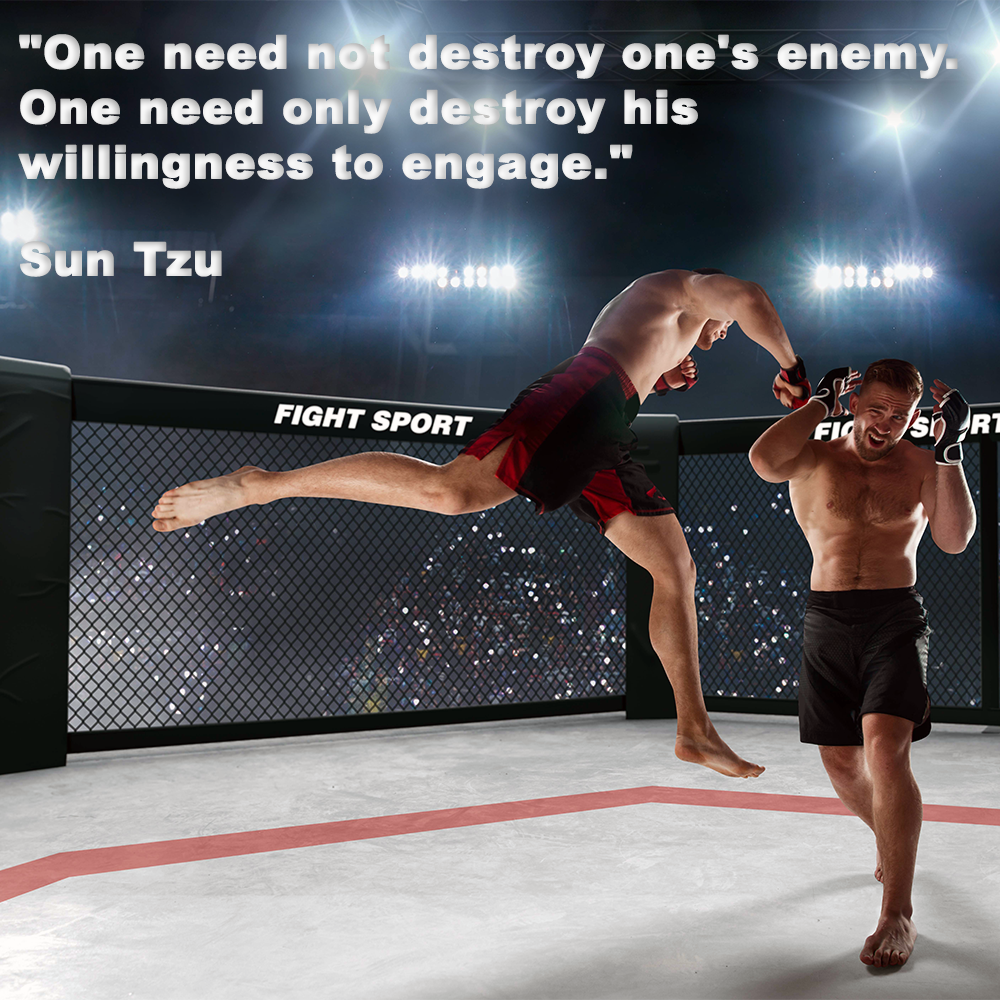
“One need not destroy one's enemy. One need only destroy his willingness to engage.” - Sun Tzu
Posted by ADAM CARTER on NOV 22, 2023

“One need not destroy one's enemy. One need only destroy his willingness to engage.” - Sun Tzu
On social media and comments I receive on some of my articles, the perception of Mixed Martial Arts as the ultimate solution for ALL self-defense scenarios has reached new heights. With individuals who have never received any formal self-defense training, confidently declaring that MMA is the be-all and end-all in real-life confrontations.
MMA's visibility and popularity, has created a perception that it is the “ultimate” solution to any physical altercation.
Individuals who have never undergone formal self-defense training are often quick to share their unwavering belief in MMA's effectiveness, contributing to a diatribe that reinforces this one-dimensional perspective.
Commentary on self-defense from those who have never undergone training, often lacks a nuanced understanding of the complexities involved. It's easy to overlook the fact that MMA is a regulated sport, and the techniques showcased in the octagon may not always translate seamlessly to real-life situations.
Armchair commentators often fail to appreciate the importance of non physical interventions, such as situational awareness, verbal de-escalation, and the legal and ethical considerations that come with self-defense…. it should NOT be a fight first mentality.
The emphasis on intense physical competition and the display of skill has led many to believe that the techniques showcased in MMA are directly applicable to real-life self-defense scenarios.
While MMA fighters undoubtedly possess impressive skills, it is essential to recognize that the sport is governed by rules and regulations.
In a real-life self-defense situation, the dynamics are fundamentally different – there are no rounds, no referees, and certainly no adherence to sporting rules. The environment, the fear, the restrictive nature of clothing and footwear, the unpredictability and chaos, the potential involvement of weapons, make self-defense a multifaceted challenge that extends beyond the confines of a regulated sport.
MMA excels in the controlled environment of the octagon, where fighters engage in one-on-one combat.
But effective self-defense requires a well-rounded approach that goes beyond the limitations of any single martial art.
Understanding the context in which martial arts are applied – be it in sport or self-defense – is vital for making informed choices about training….. or making comments about the subject on social media.
While MMA, as with other full-contact methods, undeniably stands as a thrilling sport with skilled athletes, it is imperative to distinguish between a regulated environment and the unpredictable nature of real-life self-defense scenarios.
In fostering a more comprehensive understanding of self-defense, it is crucial to value the opinions of those who have received formal training and practical experience.
There are many traditional martial arts instructors who have a wealth of real-world self-protection and self-defense experience (of course the opposite applies too). Military and law enforcement professionals bring a wealth of knowledge that extends beyond the surface appeal of MMA, but still remain rooted in their traditional practices. Engaging with these informed perspectives helps counter the oversimplification that often characterizes social media dialogue on self-defense.
To mitigate the proliferation of misleading information, it is essential to encourage a balanced view. While MMA, and other full-contact sports, offer valuable skills, it is not a one-size-fits-all solution.
"One need not destroy one's enemy. One need only destroy his willingness to engage." - Sun Tzu
![]() Photo Credit: Freepik
Photo Credit: Freepik
